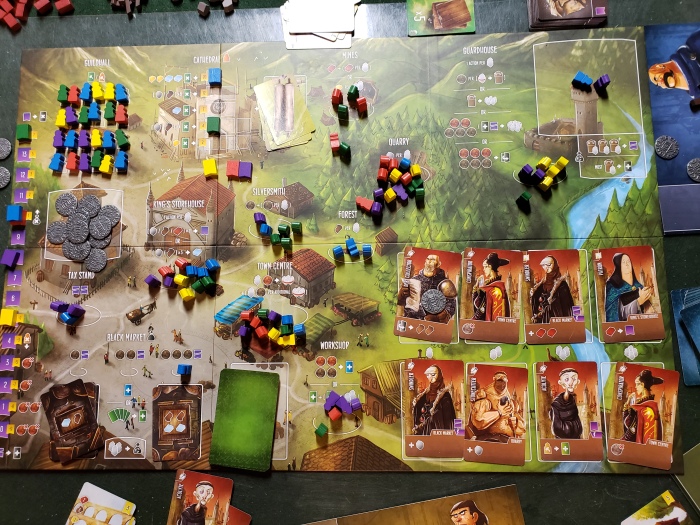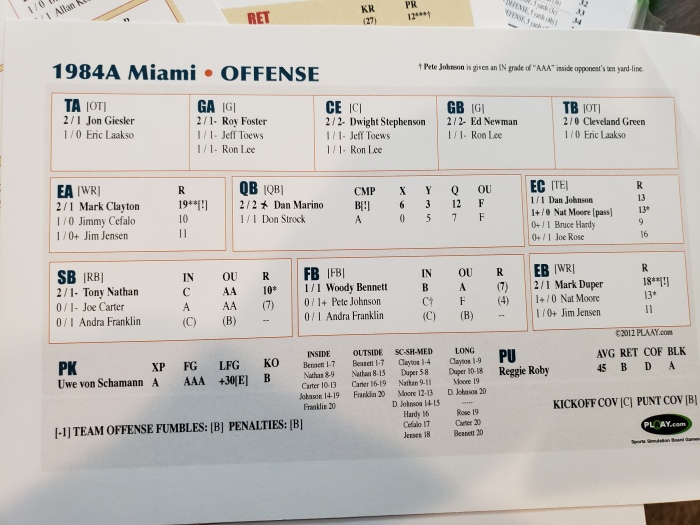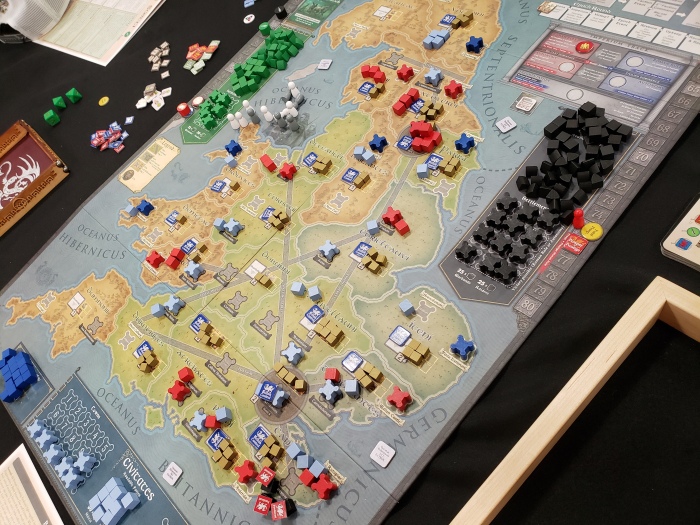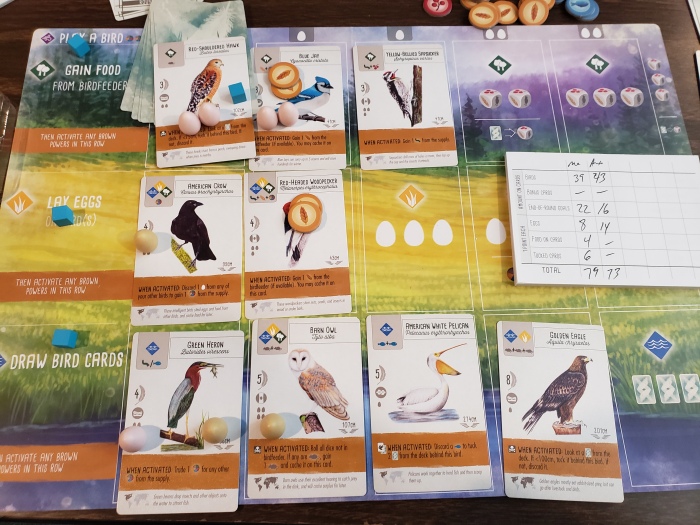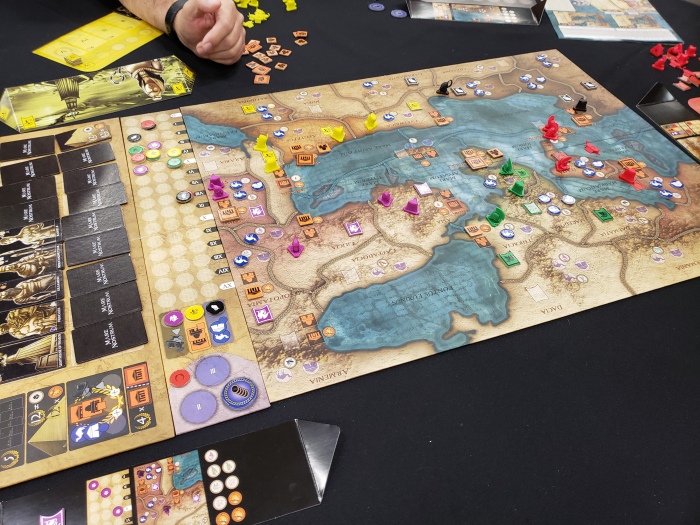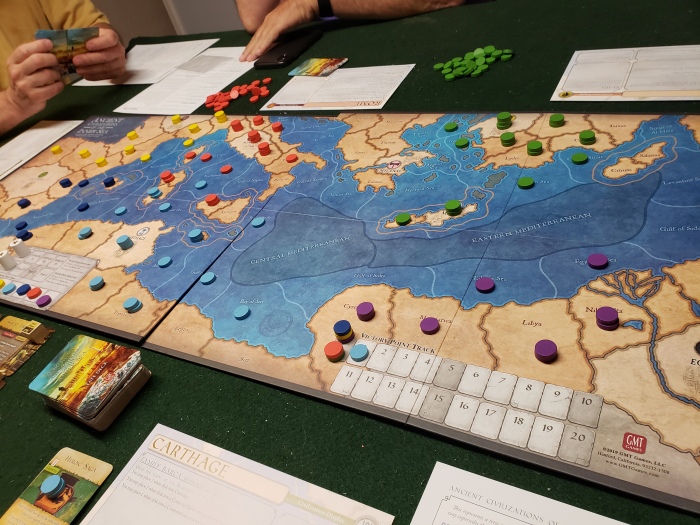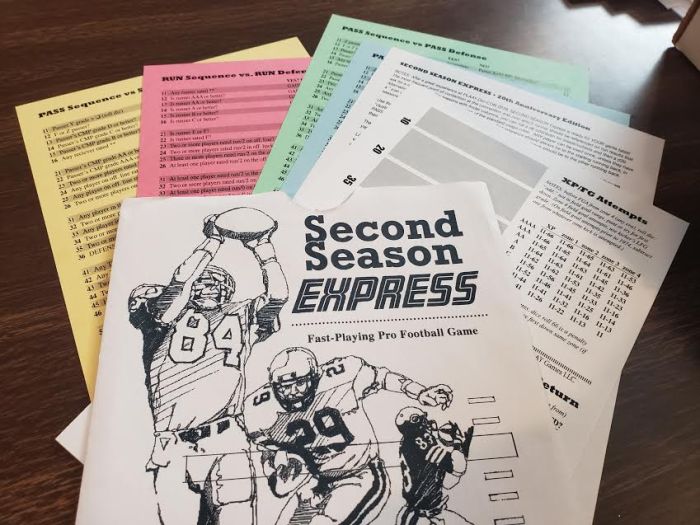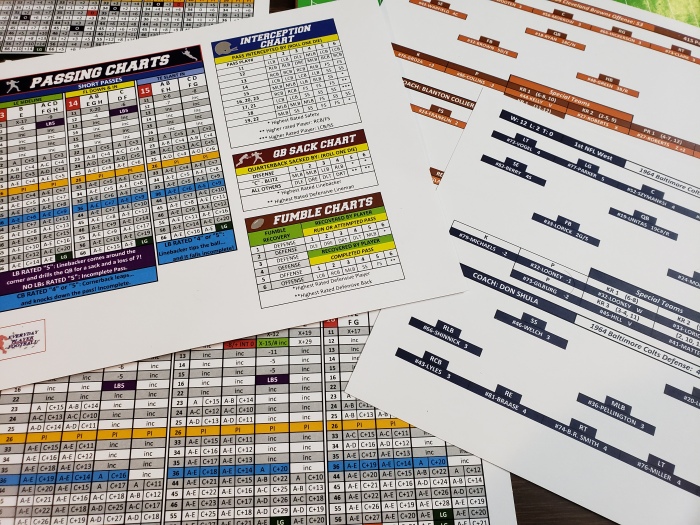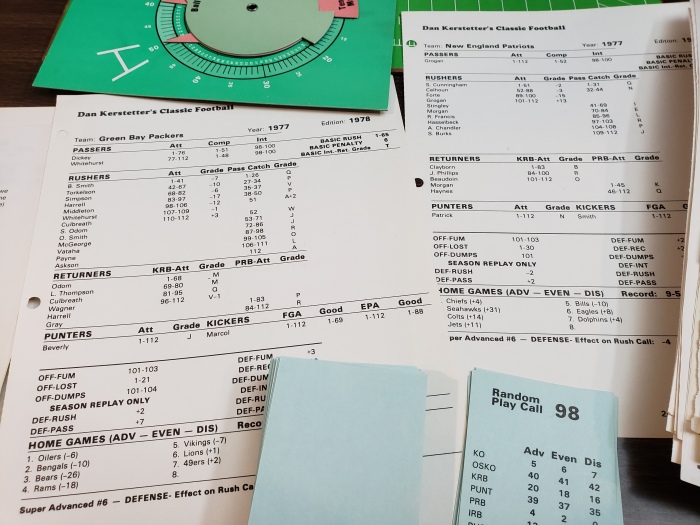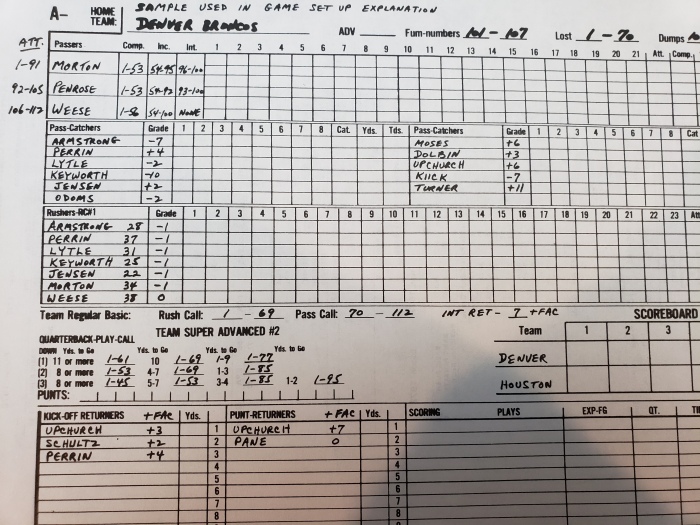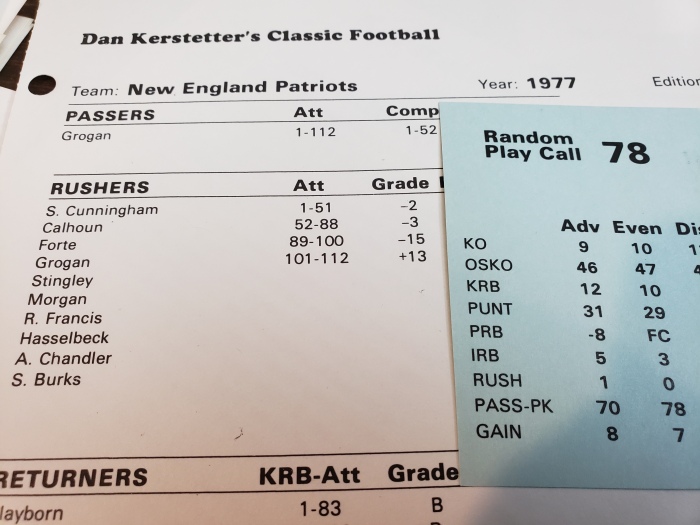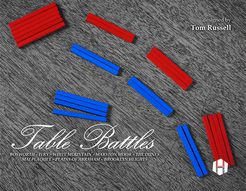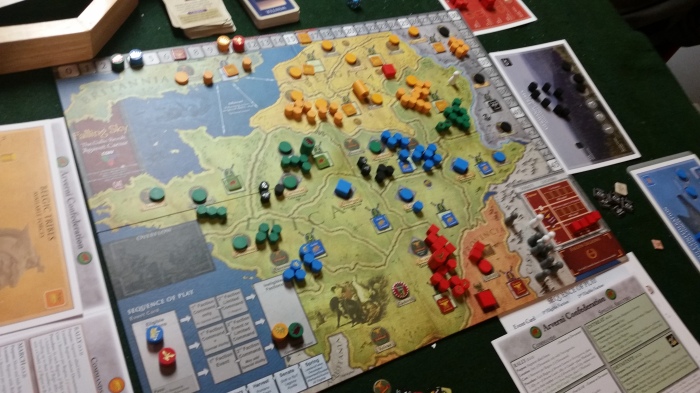In some ways, my 2018 gaming year was a bit disappointing. With a week left, I am hovering around 100 plays, almost half of my 2017 total. In other ways, it was a rewarding year. After giving up reviewing games for a company, I found that I got back my freedom to play the games I truly enjoy. The result was some truly rich gaming experiences. So before I make a resolution to play and write more next year, I wanted to look back at my favorite fifteen games I played from this year.
15. History of the World (Z-Man Games Edition)
I have played other iterations of History of the World before, and I was admittedly skeptical that yet another version would hold my interest. However, I walked away from Z-Man’s version pretty impressed. There are fewer epochs, and there are more empires to pull in each. The game feels less predictable as a result. The built-in catch up mechanic keeps the game balanced. The only caveat is that you need a good group to play it with as a poor move can by one player can gift the game to another, completely killing the suspense of the final round.
14. Men of Iron
When I made the list, I did a double take. Did I really play so few hex-and-counter games in 2018? Sadly, I did. Men of Iron was the best of a small sampling of old school style games I played, but it is a good one. Men of Iron has a very simple system that’s easy to jump into (or jump back into after a long hiatus in my case). The games are meaty enough to be a challenge to hardened grognards. This medieval edition has some particularly brutal engagements to echo the chaotic nature of the warfare of the day.
13. 1750: Britain vs. France
1750 was a low key Kickstarter in 2017 that turned out to be one of my favorite games I have backed. Cards are used to generate the board, a series of colonies that Britain and France fight over. Players collect resource sets to generate income. Military units are moved around to protect or conquer, while you can use influence to rally allies to your side. It’s a light game, somewhat reminiscent of the beefier Pax Renaissance, and its artwork is phenomenal.
12. Pendragon: The Fall of Roman Britain
I have really come to love GMT’s COIN series. Cylinders and prisms of various colors, intermingling across beautifully illustrated boards can seem chaotic to those unfamiliar with the premise, but once you understand the flow of the system, everyone fits together perfectly. Every turn of a card presents some interesting decisions. Even if you are out of one turn, you are thinking about your next. Pendragon feels the most warlike of the COIN games I have tried, with the marauding Saxons and Picts engaging in raids, attempting to establish footholds on the Emerald Isle while the loose Roman alliance try to hold on for dear life. I find playing the invaders more fun than the Romans, which is why other COIN games are higher on the list.
11. Star Wars: Rebellion
Ah, there’s a lot to love about this game. I enjoy playing the Empire, with their great resources that try to stretch to the far reaches of the universe to find the Rebel base. I also love playing the pesky Rebels, who have a lot of ways to harass and annoy the Empire’s plans. I have yet to play a game of this that hasn’t come down to the final turn or two. Is it as good as War of the Ring (which I did not get to play this year)? No. But Rebellion is its simpler cousin. Not as deep, but loads of fun.
10. Space Empires
Midway through the year, I discovered a video game called No Man’s Sky and was immediately immersed in the exploration of a vast universe. I have always wanted to have that feeling of exploration in a board game, and I found it in Space Empires. There’s something fascinating about sending your fleets out into a space that becomes more perilous the further you sail from home. Even its straightforward solo scenario captures the feel for scrambling to secure the resources needed to fuel your expansive empire. It’s a game that makes bookkeeping fun as your balance the decisions of when to upgrade and when to expand.
9. 878: Vikings
Academy Games’ Birth of Europe series if off to a great start with 878 Vikings. Four games into the system, and Academy has managed to find ways to keep it fresh by evoking a feel for the era. Here, the game swings on a pendulum, with the mighty Vikings wrecking havoc early on with the roving hordes, and the English kingdoms try to survive till Alfred the Great can lead to armies to push the Vikings back. Your strategy seems set, but event cards can throw off your plans. 878 is one of those games where hope seems lost, but fortunes can turn before you know it.
8. Conquest of Paradise
Conquest of Paradise has a lot of similarities to Space Empires. Instead of space, you are exploring the tiny Polynesian islands that dot the Pacific Ocean. As vast as the ocean is, it isn’t as vast as space, so conflict can come fast. You really need to decide quickly what your strategy is. Precious island resources are gobbled up. Can you stretch to the far reaches to find a hidden paradise, or quickly consolidate and try to overtake your neighbors? GMT does a great job of letting the theme shine through the use of cultural innovations, which can be added to your empire for powerful benefits.
7. Whitehall Mystery
Growing up, I played a lot of Scotland Yard, a fun cat-and-mouse game where one player tries to elude other players across a map of London. Whitehall is the adult version of that game. Now, one player plays a brutal killer, leaving body parts across the city. Police are tasked with hunting the culprit down before the crime is complete. The killer only appears when they commit part of the crime, and the other players must work together to try to corner and guess where the murderer is. Don’t let the macabre theme put you off, it’s a wonderful game of deduction and teamwork, and playing the killer is a thrilling game of matching wits.
6. Raiders of the North Sea
Raiders of the North Sea is an outstanding game that’s been in my top ten since I first tried it. Players are Vikings, attempting to impress the Chieftain by raiding settlements. The heart of the game is worker placement, placing a Viking to work one resource then picking up another to work a second. You may feel like there’s little player interaction until you realize every turn directly affects the next. This means you end up constantly having two plans because one can easily be eliminated by the previous player. From there, the game is about timing your raids, balancing resources, and taking risks. You get a lot of decisions from such a simple mechanic.
5. Falling Sky: The Gallic Revolt Against Caesar
I have enjoyed every COIN game I have played, but Falling Sky would be my favorite. The game has an intense push/pull of four factions each with their own agenda that directly conflicts with another’s. The Romans have some considerable military advantages, but they are dealing with a wave of insurgency across the map. Even their so-called ally cannot be trusted, and everyone has to watch out for the Germanic tribes. The map is so tight, and there’s no buffer between you and a potential enemy. Falling Sky is a masterpiece of gaming, a must play for anyone interested in the concepts behind COIN.
4. 1754: Conquest – The French & Indian War
I will sing the praises of this game to anyone who will listen. Academy Games’ final installment in their Birth of America series is their best thanks to a few tweaks to the system. The general premise is much like its predecessor 1775. You must control the majority of victory point locations to claim victory. Added are ports, forts, and muster locations. British and French regulars must arrive at port locations. Forts add defensive bonuses to areas. Muster areas are where your provincial units appear. Native Americans also play a significant part, often tipping the balance in battles along the frontier. These may not seem like major changes, but they are enough to give this game more of a war game feel than others in the series. It also feels true to its historical material. The French must hold the ports to maintain their supply of reinforcements, while the British need to push their three prong strategy to put pressure on Canada. It’s not just my favorite Academy Game, but it’s an outstanding French & Indian War game.
3. Table Battles
My first introduction to Hollandspiele’s catalog was Supply Lines of the American Revolution: The Northern Theater, which did a great job of making a war game with an emphasis on supply. My desire for a quick battle game led me to Table Battles. Cards represent units within an army. Each unit has a dice result tied to it. On your turn you have to decide how to allocate your dice. As dice get placed, you can then attempt to attack your opponent’s units. Players can screen or absorb attacks. The game is about feints and probes, looking for cracks in your opponent’s defense till you can start breaking their flank. It’s part puzzle part, part dice fest, making it fun both against an opponent or solo. It’s an engaging quick battle game, just as advertised.
2. Mare Nostrum
I talk a lot about game balance, and that’s important in a game. A good game should feel like everyone is in the hunt. Mare Nostrum goes a step further with everyone having a legitimate shot to win at some point. Mare Nostrum is a civilization game with limitations. You cannot simply spread yourself indefinitely across the board. Piece limitations limit your scope of influence. Empires ebb and flow throughout, growing and shrinking as alliances form and crumble. Conversely, you rarely see anyone completely wiped out. Like the warlords of Europe’s history, players are always keeping each other in check, never letting one become too dominant. I say dominant, but dominance can mean different things in Mare Nostrum. Maybe it’s your military might, surging economy, or impressive cities. Part Euro, part economic engine, part war game, Mare Nostrum provides you with a different experience with each empire you play, not to mention multiple paths to victory. With the right group, Mare Nostrum can be an amazing gaming experience.
1. Pericles
Three years ago, I was blown away by GMT’s Churchill, a war game more about the political power struggle of the Allies rather than their struggles on the battlefield. Enter it’s spiritual successor, Pericles, which takes the political drama and adds in the perils of warfare. This makes Pericles feel like two games in one. First, you battle with your own ally for political control, debating in the Senate of Athens or Sparta to be the one to lead your legions or fleets. Then, the drama moves to the map, where your put your political plans in place in an attempt to maneuver your armies to victory. To win, you must not only win the war, but also win the most honor within your own faction. It’s a deep, thematic game, and because of that, I feel like I have only scratched the surface on how good this game can be. I am hoping 2019 includes more than a few plays of this game.

